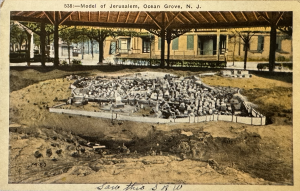 Some months ago, I wrote a column about a social studies textbook being used in B.C. classrooms that contained a pernicious sidebar about the modern State of Israel.
Some months ago, I wrote a column about a social studies textbook being used in B.C. classrooms that contained a pernicious sidebar about the modern State of Israel.
Recently a class using that very textbook came to our synagogue to learn about Judaism and the Jewish community – 500 Grade 8 students whose contact with living Jews was minimal, if they had experienced any at all.
What could I say that would put what they might have read into some context?
The class was a study in the demographics of British Columbia’s Lower Mainland, with students whose families came from Asia, from the Indian subcontinent, from eastern Europe – indeed from all over the world. Many, but not all, were Christians, but others were Sikh, Hindu and probably Muslim.
We were given a generous 40 minutes in which to discuss Judaism and the local Jewish community. This required condensing 3,800 years of the development of modern Judaism, plus giving a brief overview of how the local community functions.
Given the impossibility of such a task, what was a girl to do?
I hoped that those familiar with the Christian Bible would relate to the stories of Abraham, Jacob and Joseph, the saga of Moses (they had prepared by watching the film The Prince of Egypt) and the Exodus, but after that, I expected that there would be a wilderness of ignorance. Maybe some had heard about the kings of Israel, but beyond that, nothing.
For those who didn’t have one of the three western monotheistic religions as part of their backgrounds, we would have to start from scratch.
I started with the founders of the Israelite nation, Abraham and Sarah, and the beginning of monotheism. I described slavery in Egypt and the central importance of the Exodus story – that gave me a chance to talk about Passover and national liberation. I talked about the entry into the land of Israel and how the land of Israel, central to Judaism, at one time housed the Temple in the capital, Jerusalem, and how the present State of Israel has been reborn as a modern nation.
I was able to compare the idea of Judaism as a religion based on a code of laws to Islam, which also requires a commitment to a system of laws regulating private and communal life. I described the role of the rabbi as scholar, teacher and moral authority, noting that Judaism has no sacraments similar to Christian communion and no priesthood.
I talked about kashrut and the respect it engenders for animals. I described home-based holidays (e.g., Passover and Chanukah) and the solemn synagogue-based services on Rosh Hashanah and Yom Kippur. The students had a chance to see the Torah scrolls in the ark and to look into the prayer book at the Shema, which I likened to our basic creed.
Then I waited for the questions.
They wanted to know why the boys had to wear kippot and what they signified, and whether girls and boys had the same responsibilities. I noted that had they themselves been Jewish, they would have celebrated a bar or bat mitzvah at the ages they are now (12 and 13).
Why did we practise animal sacrifice? The question offered me the chance to assure them that today’s Judaism is not to be found in the biblical account alone, but in the rulings of the rabbis, and that following the destruction of the Temple 2,000 years ago, we no longer worshipped in the same fashion, but in the synagogue, having replaced sacrifice with prayer.
And then came the big one: do Jews believe that Jesus was the Messiah?
Finally, I had the chance then to talk about the Jewish idea of the messianic era, the time of peace and universal harmony.
Whatever they knew, or thought they knew, about Jews and Judaism (and I’m sure some of them harboured more than a little prejudice), this was a chance to really engage their ideas about justice – on which teens are very, very strong – and Judaism’s commitment to a future just society.
Whatever else they came away with, I can only hope I gave them positive insight into a religion that they knew very little about. At least it was a start.






